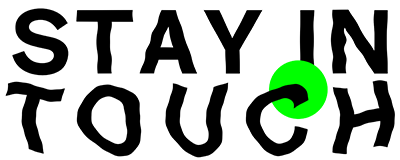2017 – Santé publique and Critique
Didier Fassin’s »The Endurance of Critique« revisited
By Anna Echterhölter
Didier Fassins The endurance of critique. Download on the author’s website
The current disconcertment about the attitudes of anti-vaccinationists and of both left and right-wing Third Position populists is often intermingled with a far more fundamental disbelief, one that thrives on the most recent standpoints of supposedly emancipatory, theoretical critique. The true nature of critique has become increasingly vague—where can it even be applied and which principles must it defend in order to still be itself? Reading Didier Fassin’s »The Endurance of Critique« (2017) does not immediately resolve this spell of dizziness, but the text does offer some food for thought.
Fassin associates »endurance« with undergoing repeated ordeals. Critique is in a difficult position these days. The very concept is jeopardized due to a vortex of malice and heresy, conspiracy theory and fake news, post-truth and bans on critique in safe spaces. But for Fassin, the excesses and aggressive incongruities of critique are no reason to just sit tight. He considers the contemporary turmoil of critical thought as a symptom of a reactionary turn in society. His conclusion: »Let us then use the discomfort around critique as an occasion for its reassessment.« (5)
In this text Fassin does not name the precise push and pull forces, which, in his opinion, have set the principle of critique out of balance: the lavish financial injections for right-wing opponents of the system, the search engine algorithms propagating prejudice, the new wars in the name of humanism—we are left with assumptions. However, it must be stressed that Fassin remains a materialist. He invariably posits inequality and economic power as formative aspects in the history of critique, contrary to the many metacriticisms from the allegedly left-wing camp, which presently seems quite fascinated with the history of ideas, in blaming postmodern theory or gender studies.
The article elaborates on three case studies: AIDS denialism in South Africa, trauma in Palestine, and policing in French banlieues. Fassin does not shy away from conflict. Of these examples, the first one, in particular, is of importance for the corona situation. The history of theory integrated into his arguments is anchored in the field, and almost exclusively in slums, where it is significantly more difficult to reconcile rational solutions with the living conditions on site than in the centers of Enlightenment. For Fassin, the problem of inequality, one of the cornerstones of critique, always outweighs the cosmos of the written word. This approach can be owed to his field research as a social anthropologist and to the fact that he succeded Clifford Geertz in Princeton. But in his pragmatic calibration of theoretical positions, one might also discern an echo of a past life in which Fassin served as an activist internist or the vice-president of Médécins sans Frontières. Most recently, he became Professor to the Chair in Public Health (Santé publique) at Collège de France.
The history of critique is not one of medicine or plagues, even though d’Alembert’s statistical calculations on vaccination risks in connection with smallpox diseases could rightfully be considered the founding document of the Enlightenment. Albeit, human infection does appear in Fassin’s article on the ailment of critique, and it proves to be a fertile ground for distorting Western matters of fact.
During his six years in South Africa, Fassin witnessed how the country developed into an epicenter of the AIDS pandemic. Prognoses estimated the life expectancy of adults to decrease by 20%, and one adult of four was registered HIV positive—with the black population disproportionately affected. Science denialism, the rejection of scientific explanations, began to spread and was even articulated by decision makers in the highest political ranks. There was doubt that the immunodeficiency was caused by a virus; the efficacy of medications was disputed or played down as negligible in relation to their fatal side-effects. In Fassin’s monograph on this topic, When Bodies Remember (2007), it is painful to read about this reaction to the crisis. But the dismissal, negating, the rigorous condemnation—this is by no means what Fassin’s readers go away with. Instead, he calls for profound historical anthropological focus in the understanding of these momentous views of the virus. For example, he mentions the ostensibly plausible narrative in South Africa at the turn of the millennium, that it was the fault of »the West«: AIDS was intentionally planted in South Africa in order to decimate the black population, in particular, and to abuse them as guinea pigs to test drugs. Characteristic of conspiracy theories, the control of events in an angst-ridden situation is attributed to a small group of powerful elite. Wasn’t the mortality rate especially high among the black population? This came in handy to disguise the fact that the catastrophic working conditions in low-wage occupations hit the black population far harder. Conspiracy and power relations are interdependent. But also the country’s post-colonial situation was a decisive motivating factor for the conspiracists, willingly overlooked by the West. In South Africa’s collective memory the model of a resentful foreign elite is an established fact. The colonial administration used the plague epidemic of 1900 not to separate the sick from the healthy, but white people from black people. The latter were forced into townships, which is considered a founding stone of apartheid and racial segregation of the late twentieth century.
At this point, Fassin does not go so far as to call conspiracy theory itself a form of critique. Yet, the manner in which he draws from the history of violence, genealogy, and moral anthropology to explain irrationalist beliefs is also familiar. He insists that taking conspiracy serious and engaging in modes of understanding that spur conspiracy in times of plague enable one to decipher irrationalism and does not imply the demise of critique. Furthermore, he holds the agents of inequality partly responsible for the rise of conspiracy theories. One wonders, however, if there are positions that do not deserve this concession, or if there are also experiences of violence behind the ever louder corona myths in circulation. Still, the distorted, peculiar critique of the AIDS denialists in South Africa remains an occasion for critique, yet is not elevated to the same rank as such. In the hegemonic framework conspiracy theory is contoured as a force that can be traced back to the specific local history of violence. As opposed to equating critique with the rationality of its subject, Fassin advocates the analysis of inequality as a central practice of critical thinking.
That Fassin frames the explanation of irrational beliefs as a potential task of critique has to do with the position he assumes in the methodological field of the academic debate on metacritique. Fassin invokes Bruno Latour’s obituary to critique Why Has Critique Run Out of Steam? (2004). In his plea for a reorientation from matters of fact to matters of concern resides an anxiety that critique was losing its power: Each and every critique was permanently absorbed and undermined by capitalist market mechanisms, while any potential for critical practice and real change instantly falls flat, as Luc Boltanski and Eve Chiapello also observed. Even though the 1920s and late 1960s are perhaps still unmatched as prime times of critique, Fassin sees no reason to worry about its complete decline. He discerns two reservoirs of critical discourse and therewith two perpetual traditions of critical thought, which he, despite some weak points, would rather not view cynically: on the one hand, critical theory as coined by the Frankfurt School, combining the Marxist or Freudian approaches, and the complex of genealogy applied by Nietzsche and Foucault, on the other.
The first strand is characterized primarily as a critique of ideology. Imposed veils must be removed, a false consciousness enlightened, and this new-found truth will inevitably lead to a better and more rational understanding of existing conditions. The second, genealogy, upholds that the effects of truth and power go hand-in-hand, and that these entanglements of motivations, which turn subjects into partisans of one specific truth, must be comprehended: »In the first case, the subjects are supposed to move from falsehood to truth, whereas in the second, they are expected to understand that there exist other potential arrangements between true and false.« (14) Fassin draws inspiration for the second position from »history from below« and likewise from the history of rationality of Ian Hacking or Lorraine Daston (Les économies morales revisitées, 2009). But, of all things, he condemns humanitarian reason (La Raison humanitaire, 2010). In this work he traces the rhetorics of states, which since 1989 have been rendering new geopolitics socially acceptable with the mere pretense of humanitarian intervention.
For him, these two reservoirs of critique are—much to the dismay of supporters of each position—combinable, even though they differ profoundly and irreconcilably in their conceptions of truth. Whoever might now assume that critical theory has excommunicated Fassin for this commitment to both traditions will see that the opposite is true in the author’s Adorno lectures (Life: A Critical User’s Manual, 2018). The history of critical theory has grown into a full-fledged genre (Andrea Allerkamp & Sophie Witt, Gegen/Stand der Kritik, 2005; Martin Saar, Genealogie als Kritik, 2007; Rainer Forst (ed.), Sozialphilosophie und Kritik, 2009; Rahel Jaeggi & Tilo Wesche, Was ist Kritik? 2009). The discussion on Fassin’s essay also continues in his A Time for Critique (2019).
The fact that critique—and public health along with it—is presently ailing amid the multitude of interconnected catastrophes is reason for Fassin to embark on an intellectual mission. He does not want to send science where social emancipation is taking place, rather depart from the opposite in his analysis of society: in the lurching, failing, and distorting of critique. His recommendation: »Making sense of what seems peculiar.« (10) These days there is no shortage of occasions for such an endeavor.
Didier Fassin: The endurance of critique. In: Anthropological Theory 17, 1, 2017, 4–29. Download on the author’s website

